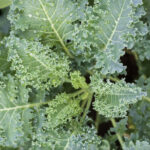Move over beer, wine is challenging your place at the barbecue.
At this time of year, a remarkable transformation takes place across the landscape. Neighbors and friends huddle around their favorite braziers to create meals based on meat. One of my favorites for this season is beef. This brings up the question that confuses many folks.
What wine goes best with the fruit of the grill?
The short answer is red wine with red meat. The reason is that the tannin from the skins of the grapes matches up well with the fat in the meat. On the palate, the two combine so that one harmonizes with the other. Usually, you end up either with a long finish from the wine, or it will act as a palate scrubber causing the next bite to taste like the first.
Today, we will discuss red wines from the southern hemisphere. In my opinion, these are a natural match-up for the tradition of the backyard barbecue. There are many selections on the market, so it helps to follow some guidelines. Don’t choose wines based on high alcohol content. Even though they may show a good level of grape ripeness, they can be overpowering to your taste buds. When confronted with bottles from the same winery and one says “reserve,” this usually means that it has spent more time in oak before bottling and may need some aging time to settle down and become more food friendly.
Australian Shiraz is the same red noble grape as Syrah, which is number one in France’s Rhone Valley. It is spelled differently to distinguish it as the style of wine that develops down under. In my opinion, the big flavor here is fruit. It has an inherent sweetness that goes perfectly with steak. The biggest fruit bombs come from the Barossa Valley, which also means big proof on the label. Wines from McLaren Vale, a popular wine-growing region in South Australia, have more balance and nuance. Be governed accordingly.
The next quaff to explore is Argentinian Malbec. This grape was an obscure fruit used for blending in the Bordeaux region to make up for shortcomings in the wine during a mediocre vintage. It has burst onto the international scene as a wine to be reckoned with at all price levels. The word for me is spice. These are great complements for our cookouts with many layers of flavor galloping across our palates. Buy young, reasonably priced bottles. The expensive stuff needs aging.
The last wine to discuss is Cabernet Sauvignon from Chile. Known as the king of red wines, it is grown all over the globe, but is best known as the top grape in Bordeaux. To me, this is all about balance—fat-cutting tannins mixed with great fruit and long finishes. Another plus is that you don’t need to age these wines for a long time. They are delicious when young, unlike Napa Valley. My favorites are from the Maipo Valley, which is just one place in a country where wine making has become an obsession and that allows the South American nation to stand head and shoulders tall in the world of wine.





